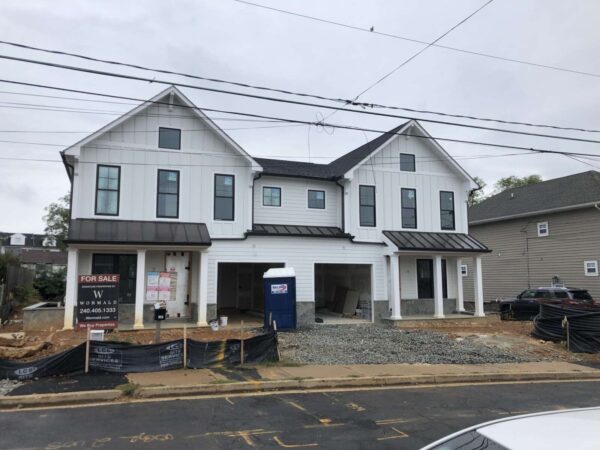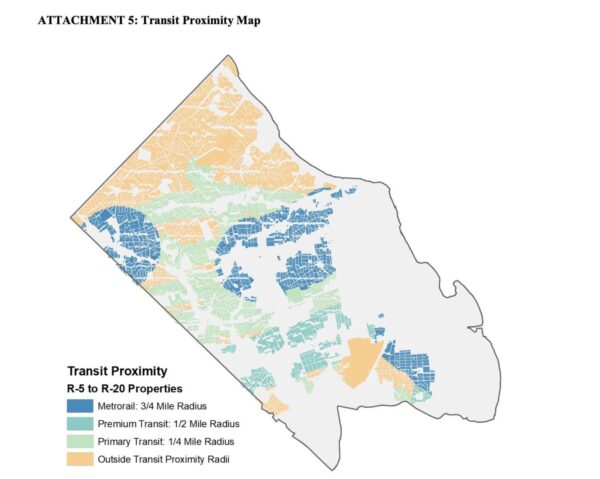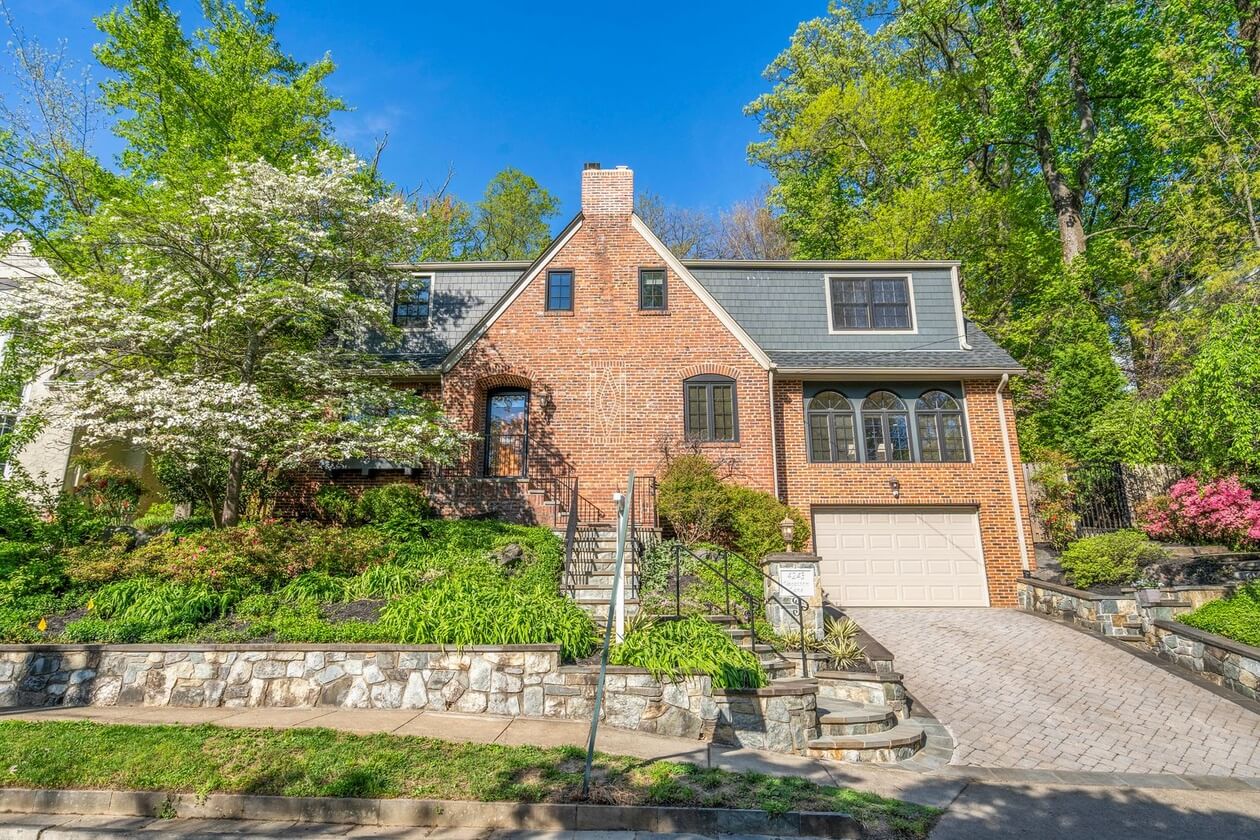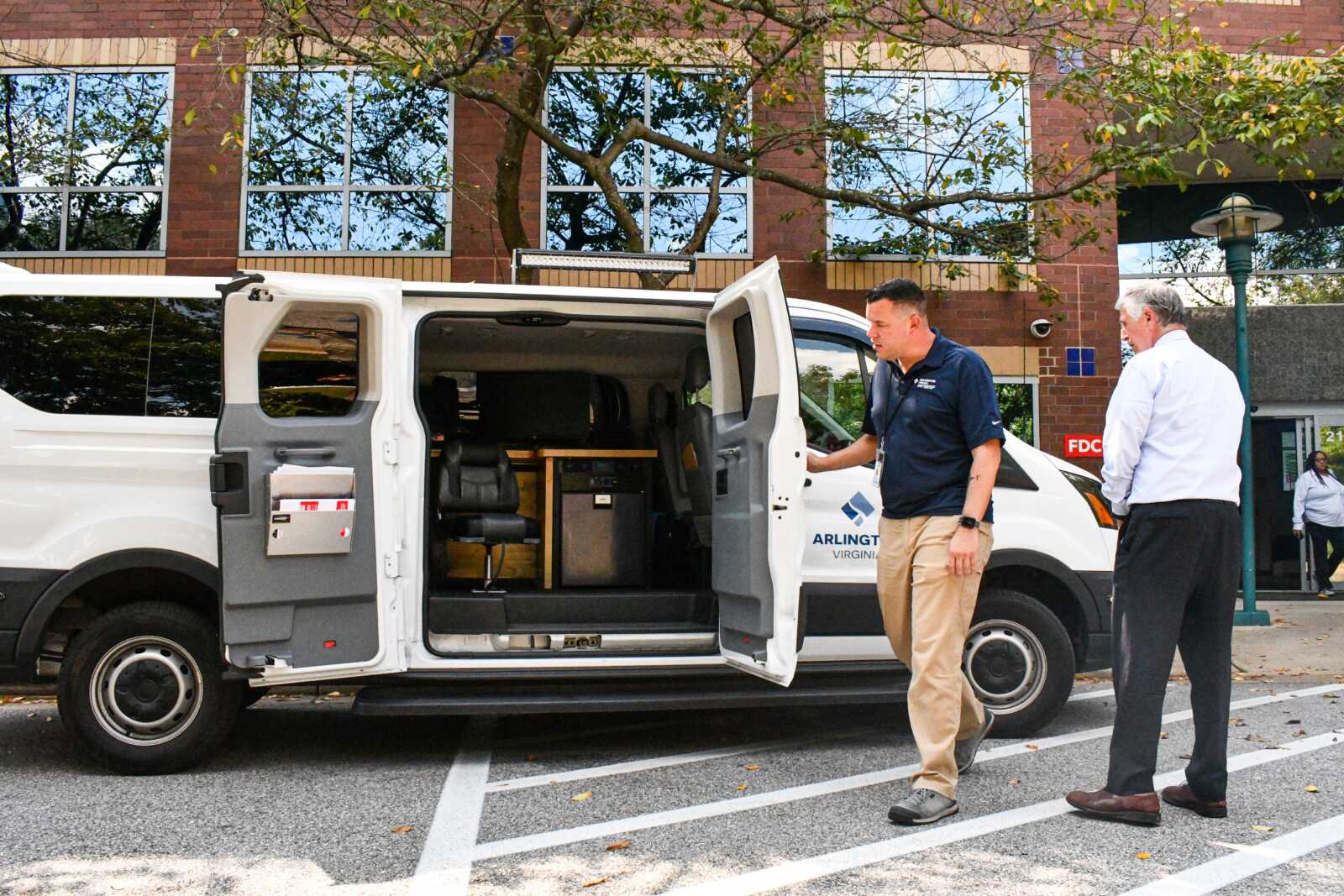
The Arlington County Board says a draft version of zoning changes that could allow Missing Middle housing types includes provisions that respond to community concerns raised this fall.
After contentious meetings this summer, the county hosted community conversations and information sessions to gather more feedback from residents and share more information about its proposal to allow “middle housing” types — ranging from duplexes to eight-plexes — in districts zoned for single-family homes.
The new draft document, released Monday night, allows the by-right construction of duplexes, three-unit townhouses and multifamily buildings with up to eight units on lots no larger than one acre in districts currently only zoned for single-family homes. (Lots greater than one acre would require the county’s site review process that incorporates public hearings.)
The new additions address the number of units allowed per lot, parking requirements, tree loss and the overall impact of Missing Middle on the pace of redevelopment, per a County Board letter to the Planning Commission describing the draft.
“The input from so many members of the Arlington community has shaped the options for text amendments that are now before you for consideration,” the Board letter says. “The Phase 3 Preliminary Policy Approaches and Considerations — options which this text could effectuate — reflect key areas of community feedback.”
Now, the Arlington County Board is set to decide whether density should be determined by the size of the lot, or if all lots should allow up to eight-unit buildings, as long as the building footprint does not exceed a certain level.
Missing Middle proponent Jane Green, representing YIMBYs for Northern Virginia, said the tiering proposal “is reasonable and codifies what would mostly happen based on the reality of building code restrictions.”
Another proponent, a longtime housing researcher Michael Spotts, said in a thread on Twitter that he prefers allowing eight-unit buildings everywhere, but the tiered option “seems flexible enough to enable MM while addressing concerns about massing on smaller lots.”
Regarding parking, there are new limits placed on the number of spots required per building that vary based on proximity to transit and whether the building is on a cul-de-sac.
The draft text would require at least .5 parking spaces per unit within a certain distance of transit, and at least one parking space per unit for dwellings on a cul-de-sac, regardless of proximity to transit.
For advocates, that’s too much parking. Spotts noted he thinks the parking standards are “a bit too high,” but, he added, “I like that they allow for administrative approval for off-street parking reductions if on-site parking is available. ”
This marks a departure from other municipalities that have already approved Missing Middle housing. Both Portland and Minneapolis removed parking minimums to encourage construction of these housing types.

As for trees, the draft proposes requiring at least one tree for every dwelling unit on a lot.
While Green and Spotts said the provision on trees highlights the county’s willingness to listen and change, Missing Middle opponents are not so sure.
“The new draft Missing Middle plan shows that the County Board is listening to its critics,” Green said. “It provides options that address tree canopy, the potential of limiting higher unit buildings to larger lots and adjusting parking requirements by proximity to transit.”
Anne Bodine, of Arlingtonians for Our Sustainable Future, which opposes the proposal, said “it sounds good at first glance, but I’m not sure how it clicks with” state tree planting requirements.
Lastly, regarding the limits on the pace of development, staff have included “placeholder” language floating the idea of annual caps on development or neighborhood-based caps to prevent high concentrations of projects in some areas and little change in others.
That responds to concerns that neighborhoods with relatively less expensive homes and land values, such as Halls Hill, will see more development than more expensive neighborhoods further north.
But YIMBYs of NOVA is urging the county to adopt options providing “the fewest barriers to building new housing,” Green said.
“In particular, the County should reject options that allow caps on the number of units per year,” she said. “Addressing our housing crisis cannot wait.”
For its part, the county says in the draft that redevelopment will likely be moderate.
“Expanded housing option development is expected to occur incrementally on properties currently occupied by one-family dwellings, either through redevelopment or adaptive reuse of existing houses,” per the draft. “The localized impacts of new housing types are expected to be manageable because the pace of change will be gradual and incremental, with individual development sites interspersed with existing one-family development.”
Not enough time to process
Missing Middle opponents reiterated their long-standing criticisms that these dwellings will mostly be expensive, smaller units for rent rather than “family-sized” units that people earning the area median income can buy.
They also described to ARLnow being blindsided by some of these changes, which come weeks before a Planning Commission hearing on Dec. 5 and a possible vote by the Arlington County Board on Dec. 17.
“We are continuing to review this 42-page document, but we’ve had less than two days to really examine the specifics,” the anti-Missing Middle group Arlingtonians for Upzoning Transparency said in a statement to ARLnow. “The plan is flawed. The process is flawed. The County Board should not vote in December.”
AfUT says the draft doesn’t reflect conversations in which county officials floated considering street width and other constraints when deciding parking requirements, or the idea of a more prescriptive tiering approach that would allow only duplexes and triplexes on Arlington’s smallest lots, fourplexes on its middle-sized lots and six- to eight-unit buildings on the county’s largest lots.
“We are deeply concerned that Arlington’s proposed zoning amendments fail to reflect the extensive public input the County has received, including at their community conversations,” AfUT said. “Nor do the amendments reflect many of the options County officials themselves offered in public forums that would minimize the unintended consequences of this misguided policy.”
In a newsletter, Arlingtonians for Our Sustainable Future conceded that the document has some provisions for reducing building size and some surprises.
“The Phase 3 plan contains some ideas suggested by Board members to contain the size or scope of housing proposed in the Phase 2 plan released in April,” it said in the statement. “It also contains some novel elements that have not yet been previously revealed or explained; ASF will be updating you as we review the details.”
Bodine said the changes are being proposed much too close to a potential vote.
“I get that you’re trying to be responsive but you’re going to erode trust if you release this on such short notice,” she said. “These changes are a big deal.”
Areas for improvement
Even proponents say there are things the draft can do better.
In his Twitter thread, Spotts said more changes need to be made to ensure “middle housing” developments enjoy the same flexibility as single-family projects.
To elaborate, the use permit can be used to adjust lot placement. Why might you want to do that? Perhaps to save a few existing trees, to adjust to lot grade, or to accommodate a less intrusive parking arrangement.
— Michael Spotts (@MichaelASpotts) November 1, 2022
If have a few other quibbles where the proposed language gets too prescriptive on aesthetics (tuck under restrictions, front entrance requirements). I would love to see these nixed, but they would be less of a problem if MMH had use permit flexibility.
— Michael Spotts (@MichaelASpotts) November 1, 2022
The Arlington branch of the NAACP, meanwhile, took issue with some of the proposed restrictions.
“[We] are pleased that some of the options retain important parts of the draft framework including the flexibility of allowing eight-plexes,” President Julius “JD” Spain said in a statement. “However, we are concerned that some of the more restrictive options would keep elements of exclusionary zoning in place and limit housing diversity.”
The next opportunity to learn more about the draft is during the Zoning Committee meeting, which is scheduled for next Wednesday, Nov. 9.
Recent Stories

For Immediate Release
Progress for All Announces Inaugural Black Men Vote Virtual Town Hall
Date: April 19, 2024
Contact: Marc M. M. Peters

The Award is available to recent high school graduates and non-traditional students (see the application for more details). Each recipient may be awarded up to $20,000. Applicants are required to submit an online application form as well as a short video application.
The applicant must be an Arlington resident pursuing a career or technical education accredited program, within a high-growth career, that will be completed within two years.
The careers and programs include, but are not limited to:
-
Audio, Video, and Sound Engineering Technicians
-
Broadcast Technicians
-
Commercial Drivers
-
Culinary Arts
-
Early Childcare Education
-
Healthcare
-
Information Technology and Computer Science
-
Manufacturing and Skilled Trades (including welding, auto and aviation mechanics and technicians)
-
Public Safety
ACFCU’s Free Homebuying 101 Webinar: Steps to Getting Pre-Approved
Are you ready to jump into homeownership, or have you started considering it but don’t know where to start?
Financial preparation is key when thinking about purchasing your first home and the first step to getting pre-approved. Join ACFCU for
Sweeney Todd
A victim of a gross injustice that robbed him of his wife and child, Sweeney Todd sets about exacting a terrible revenge on society.







